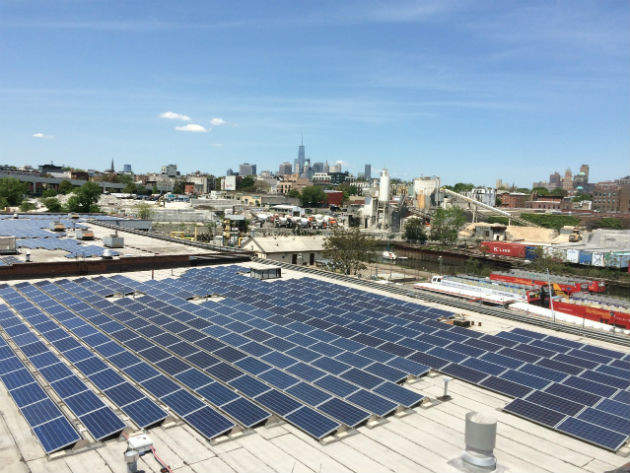

In Brooklyn, LO3 Energy has teamed up with Siemens to create a pilot microgrid using blockchain technology. Residents with solar panels can sell excess energy back to their neighbours, in a peer-to-peer transaction which takes advantage of blockchain. Microgrids minimise the amount of energy lost through transmission; as an estimated 5% of electricity created in the US is lost in transit, microgrids provide an efficient alternative. The Brooklyn microgrid also economically benefits those who have installed solar panels and their local community.

Discover B2B Marketing That Performs
Combine business intelligence and editorial excellence to reach engaged professionals across 36 leading media platforms.
New York-based start-up LO3 Energy’s TransActive Grid was first tested last year, on just one street. But it is growing in size, expanding into Brooklyn’s Gowanus and Park Slope neighbourhoods. “We’ve installed 50 meters through the Brooklyn neighborhood and are slogging through the regulatory process to be allowed to buy and sell energy legally in New York State,” says LO3 office manager Emily Petry. The TransActive Grid combines a meter and a computer, measuring both production and consumption then sharing the information so it can be acted upon. The decentralised application platform is cryptographically secure.
Blockchain works alongside this, and is expected to be become an important part of the energy matrix. The Brooklyn microgrid project is one of the first to test it. Blockchain is a shared ledger, which visibly groups transactions into blocks that are chain-linked chronologically. These blocks are verified, and cannot be altered or removed without changing every transaction within them. This makes them very secure, ensuring that both the traders and consumers are protected.
Clean, reliable, local energy
Together the TransActive Grid and blockchain are allowing the community to choose a green energy alternative. A secondary motive comes from the reliability of localised electricity sources. Since superstorm Sandy caused a series of blackouts across the US in 2012, the reliability of the grid has been called into question. Long transmission lines are not needed and can therefore not be damaged by increasingly regular extreme weather conditions. Thanks to LO3 Energy’s partnership with Siemens, the project includes a microgrid control system, allowing the electricity generated to be directed to hospitals, shelters and community centres when needed.

US Tariffs are shifting - will you react or anticipate?
Don’t let policy changes catch you off guard. Stay proactive with real-time data and expert analysis.
By GlobalDataResidents with photovoltaic panels (PV) have previously been able to sell excess energy to utility companies, but they could not profit from it. Instead they had money deducted from their bills, and remained subject to the utility company’s control. This meant that when there is a blackout in the area, despite the capability to create their own power, they would have their PVs switched off. With the microgrid there is no need for a utility company to act as an intermediary, leaving residents in control of their own power. In 2015 US solar developers contributed 7.3GW of electricity to the grid, up from just 1GW in 2010, and a quarter of this came from rooftop PV.
The Brooklyn microgrid is a small example of what could be a big change in the energy industry. Already LO3 is looking to expand the project, around America and beyond. “Each location has unique and regulatory considerations and we want to be educating regulators globally about the benefits resulting from blockchain in the electric grid,” says Petry. “Additionally, we want to be developing the right business models with forward looking partners so we are prepared to provide the services consumers are going to want in the distributed energy future.”As people search for reliable and environmentally-responsible sources of energy, localised microgrids with direct benefits to energy producers and their communities provides an exciting prospect.





